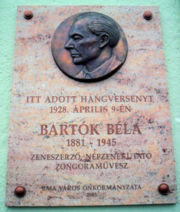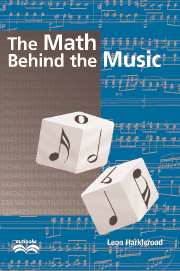
An interesting post by Kyle Gann on his blog asks why Bartok put timings on sections of his scores...
Joseph Szigeti asked Bartok about it, and he evidently replied, "It isn't as if I said: 'This must take six minutes, 22 seconds...' but I simply go on record that when I play it the duration is six minutes, 22 seconds."
The commenters (including myself) speculate on why this might be, then (of course) mention of the 'golden section' appears. I replied [ive edited it a bit and improved the typesetting, could not use html on that blog interface for some reason]
.............................
...Re the golden section, all the analysis I have read either says nothing about it (Elliot Antokoletz: The Music of Bela Bartok...its a been a few years since i read it but I dont remember any reference to golden ratios etc, nor in George Perle's analysis, though most of that is harmonic, still, the 'theory' should hold, harmony is proportion too) or evidence is presented to the contrary..
'..Musicologists such as Lazlo Somfai have debunked this notion. Somfai inspected "the complete existing source material of Bartok`s compositions as well as manuscripts of folk-music transcriptions, drafts of articles, and scattered scrap papers in the Hungarian and American estate.".
He observed that "not a single calculation of the proportions of a composition - with Fibonacci or other numbers - has been discovered," despite "the composers notorious lifelong habit of keeping and recycling every bit of paper." But the legend still lingers.
The idea of a Bartok-Fibonacci connection traces to the musicologist Erno Lendvai.
In his writings, he presented many examples from Bartok`s works, purporting to show how Bartok suffused that music.
Interestingly, even Lendvai stopped just short of claiming that Bartok deliberately used Fibonacci numbers and the golden ratio as compostional devices.
Rather Lendvai wrote, "I have no wish to prove that he aspired to an arithmetic or geometric system; he did, however, by going back to the roots of music, discover fundamental laws and "root" correlations which may be expressed by formula-like mathematical symbols".
The legend has since expanded to that of Bartok, the numerological composer.'
The Math Behind The Music: Leon Harkleroad

Harkleroad goes on to say that Lendvai basically shoehorned in connections to the golden section.
His six volume piano collection Mikrokosmos alone consists of 150 pieces. With such a body of music it would be miraculous if you could`nt find several instances in which the count for something or other turned out as a Fibonacci number or two counts stood approximately in golden ratio'
It seems this Fibonacci stuff is mythological, or perhaps more generously, has not been established, yet (a lack of evidence).
Kyle replied..
KG replies: Thanks for the update, I'd been wondering what current thinking has been. Although I must say, the third movement of the Sonata for 2P + P confirms frighteningly well to the GS hypothesis.




No comments:
Post a Comment